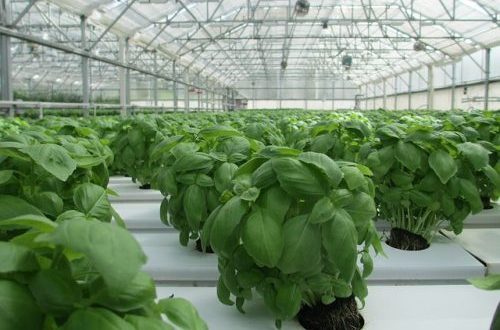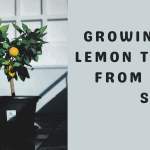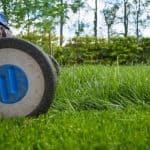When you think of growing culinary herbs indoors, basil would most likely be among the first options you consider and it isn’t difficult to understand why. Basil is a fast-growing, annual herb that blesses you with an abundant harvest within some weeks (if you treat it right). It’s easy to grow from seed and it’ll provide you with a fresh, flavourful ingredient you can use in a variety of dishes.
Provided you grow your basil plants in an ideal environment, starting them from seed wouldn’t be a problem. You can get basil seeds from your local garden centre or purchase them online. This guide has been created to inform you of how best to care for your basil indoors to ensure you reap a bountiful harvest.
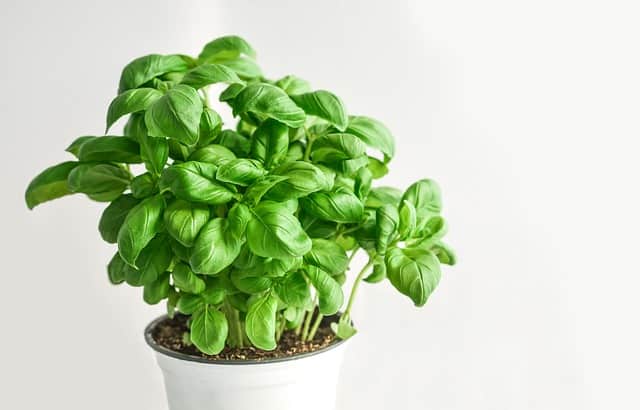
To begin growing basil indoors from seed, there are a number of items that you will need to get. The below list contains most of the essentials:
- You need some cheap quality basil seeds
- Starter pots for planting (ensure they have drainage holes)
- Starting mix for seeds
- Newspaper
- Plastic tub
- Plastic dome
- Spray mister
- Timer & fan (optional)
- Alternative light source
Once you’ve gathered all the materials you need, there’s nothing left to do except begin.
Growing Basil Indoors From Seed – Getting Started
Below are steps to take when planting basil [1] seeds:
- Get all your materials together at the planting location.
- Next, prepare your planting soil. Turn the dry soil into a plastic container, and then add some water to mix with the soil until it’s moist. Ensure you add water slowly and mix properly so you don’t turn in too much. It is best to do this with your hands so you can feel how moist the soil is and add more water or dry soil depending on the mixture’s consistency.
- Fill up the pot with moist soil leaving just about an inch of space at the top.
- Go on to plant your seeds in the pot, just a few will do. It is wise to plant additional seeds as some may not sprout.
- After planting, cover up the seeds with a layer of dry soil. The seed packet usually contains a required depth so work with that. If your seeds didn’t come in a packet, work with the thumb rule and plant seeds with a depth two times their size.
- Water your seeds a little or spray lightly using the faucet so the soil prompts the seed to sprout. If you notice any seeds become visible, push them back into the soil.
- To help your seeds retain moisture, keep a dome over them. With the dome in position, you won’t have to water your seeds until they’ve sprouted.
- Basil thrives in a warm environment so your seeds have to be placed in a warm area with an average temperature of 70 degrees. Ensure this temperature is maintained. Basil seeds germinate within a few days so in about 4, 5 days, you will notice young sprouts.
- When you observe seed sprouts, it’s time to take out the dome. Alternative lighting is necessary for ensuring your seeds grow healthily.
How to Care for Young Basil Seedlings
Seeing your seeds have begun sprouting will warm your heart. However, don’t forget they are fragile and tender so they require utmost care. Here’s how to care for your young basil seedlings:
-
Consistently Provide Moisture
Every plant needs moisture (to varying degrees) and so does basil. How often your water depends on the humidity level of your environment. However, two times every week should suffice on average. If you observe your soil feels dry at the top about one inch deep, then that’s a clear sign you need to water.
It is best to water your plants from the bottom as they’ll take up water from the roots. Excess water at the soil’s top could result in mould growth. How do you go about watering? The best way is to fill a bowl with water and place your pot inside until you observe the topsoil is moist. Place the pot back into its saucer afterwards. Instead of using the bowl, you can work with the saucer if it’s large enough and do away with excess water once you’re done.
As your seedlings develop, you’ll need to move them to a bigger pot. A moisture metre will help you know when your plant needs to get watered. Moisture is very important so make sure you keep tabs on it, water consistently, and do it the right way.
-
Sufficient Light
Basil is a good example of a warmth-loving plant. It loves the sun. If you’ll be growing basil indoors, ensure it gets not less than 6 hours of full sun each day. This is why you’ll need to keep your pots close to a sunny window. Having alternative light sources such as grow lights and CFLs is a great idea as well. Just ensure your basil plants are getting the warmth they require.
At the early stage of development, you need to expose young basil seedlings to light for longer periods. About 13 to 16 hours of exposure is ideal. Do you see why you’ll need alternative light sources? Adequate lighting is necessary so your plant branches out beautifully. Shop light is a common alternative light option. They work well for seed trays and you can easily adjust them.
Your plants should be a few inches below the lights and as they grow, elevate your light source. A timer will also be useful in regulating the light. Your timer should enable your plants to get sufficient hours of light after the sun has gone down.
If you’re going to provide your seedlings with 15 hours of light exposure for instance and the sun provides 8, adjust your timer to start at around 5 pm till 12 am, that’ll provide the remaining 7 hours required to complete 15.
-
Circulation of Air
Proper air circulation is also necessary for proper plant development. When they’re planted outside, this wouldn’t be a problem as they have direct access to the wind providing them with an unlimited supply of fresh air. This enables seedlings to develop firm, sturdy stems and maintain an upright position. Indoors, the air could become stagnant and cause the seedlings to remain very moist and even develop mould.
To solve the air problem, get a fan to help circulate fresh air. Position the fan to be directed towards the plants and put on to operate at its lowest speed for your seedlings so they provide a gentle breeze. A timer can be used to control the fan just like the light source so it’s only on for some hours each day. For those without fans, there are a few things you can do to ensure your plants have access to fresh air.
Ensure there’s adequate spacing between them. Space your pots; don’t allow them to be clumped together. About 6 inches between pots will be fine so the plants aren’t in contact with each other. Rotate (change their position) the plants from time to time.
An additional tip that’ll help is running or lightly brushing your hand over your seedlings daily to stimulate movement naturally caused by wind. This will strengthen your seedlings.
The Right Way to Prune Basil
You’ve probably seen how full and nice-looking the basil plants in magazines or the supermarket appear. Pruning them is the secret to their good looks. If you fail to prune basil plants, it will cause it to continue growing in an upwards direction and it’ll produce less than it could.
And we wouldn’t want that because the more the better, right?
To ensure you get a bushy basil plant that provides you with more leaves, you have to begin pruning as early as possible. Pruning once in a few weeks is ideal for the basil plant. Wait for the plant to become about 6 inches in height with at least 3 sets of leaves.
The initial leaves you’ll notice first are the seed or cotyledon leaves. Don’t count these as they’ll fall off as your plant develops. True leaves are the next set after the cotyledon.
Once your plant has produced up to 3 true leaves’ sets, then it is time to begin pruning. You’ll notice one at the top and the other two on both sides of the stem. As the 2 smaller sets begin to grow, you can snip off the stem right above the set. Your plant would develop two more stems at that point.
If it’s your first time pruning basil, you can do so easily. Wait till it develops at least three groups of true leaves. Cut off the stem right after the leaves’ set.
Observe the new shoots, once they get to about 4 inches in length, repeat the pruning process on the stems. It’s pretty simple.
Transplanting Basil
If you started your basil seeds in a small pot and the roots have become too large, you’ll need to replace them with a bigger pot. Leaving such plants in the small pot is unhealthy. They won’t get enough nutrients and moisture and this will affect your harvest. Also, they’ll be highly susceptible to diseases compared to healthy plants.
Depending on the pot size you used in starting up your seeds, you may need to transplant young basil plants during the fast-growing period at least once, maybe twice. When you notice the first true leaves group, you’ll need to move the plant to a pot 4 to 5 inches deep.
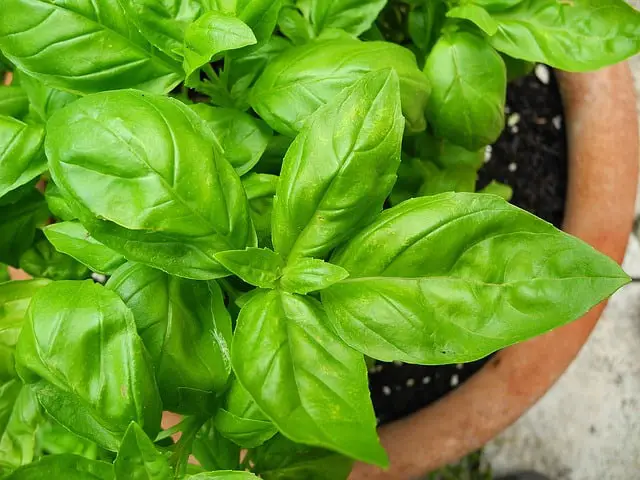
The basil will continue to get bigger so its roots will require more space. If you observe the roots begin coming out of the pot’s drainage holes, you need to move the basil plants to an even bigger pot. If you want your plant to do well, transplanting basil to a pot where its roots will have enough room is important.
Harvest Time!
It’s time to begin harvesting fresh basil when you notice it has up to 6 sets of true leaves. After waiting a few months, I’m sure you’ll be pretty excited to get yourself some fresh basil to add some zest to your dishes.
When harvesting basil, snip off stems the same way you did when pruning. This encourages the plant to be bushy and spread out, producing more branches and leaves.
Cut the leaves, and then throw away the stem. If you aren’t ready to use your leaves, store them in a baggie, Tupperware, or paper towel (dampen it). This won’t preserve the herbs for more than two days though.
Final Words
Growing basil indoors isn’t a complicated process if you know the right things to do and ensure they are done at the appropriate time. Don’t be too hard on yourself if you make a few mistakes along the way, it is part of the learning process and you’ll get better with time.
If you’ve read this article carefully till this point, I trust that you are now equipped with the right information to enable you to plant, grow, and harvest healthy, fresh basil. There are different varieties of basil to choose from and you can start growing them indoors with this guide from seed.
Enjoy!
Glossary
[1] Growing Basil – Link

